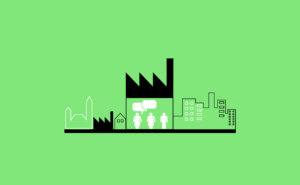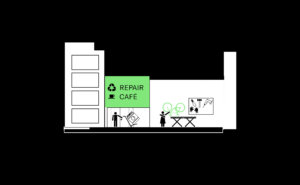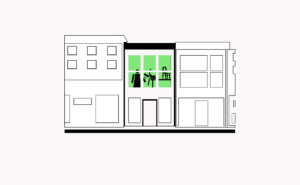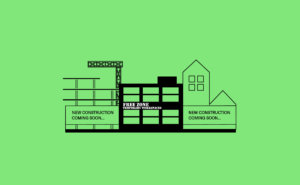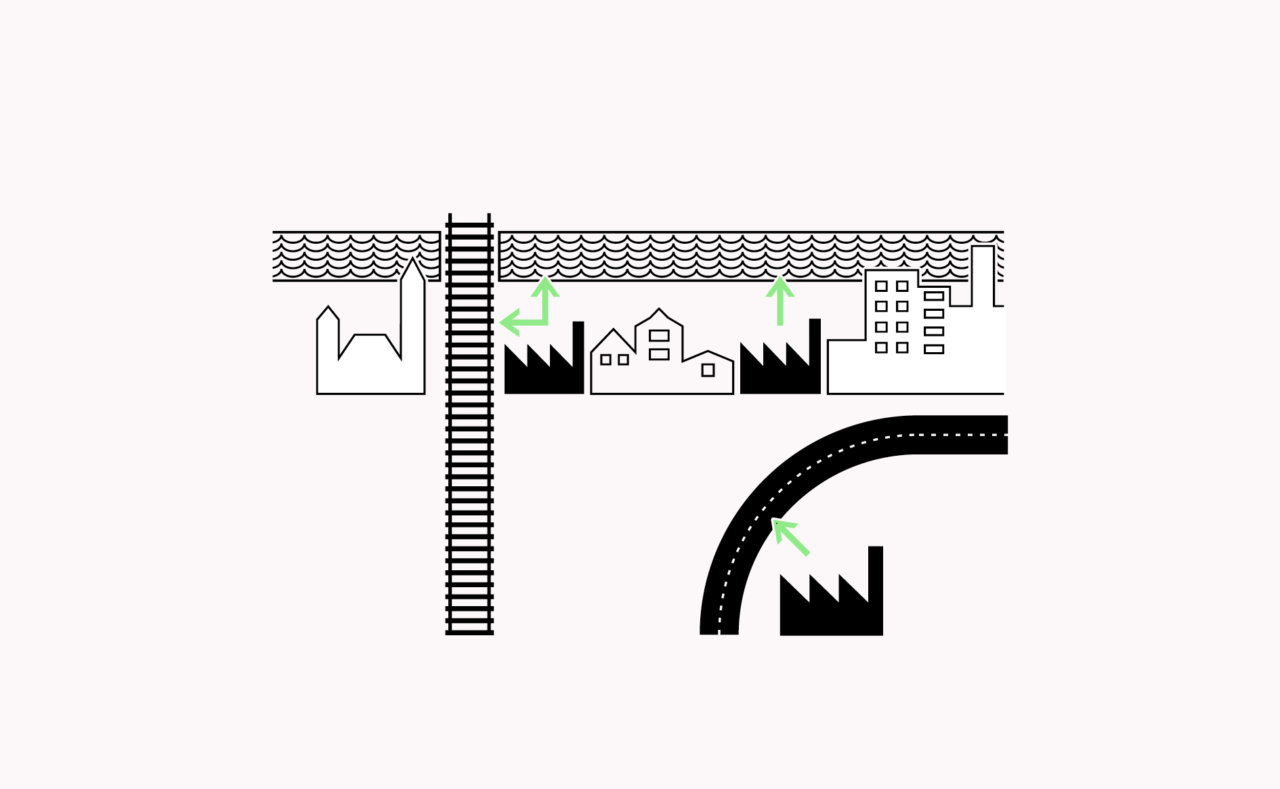
C.7 Links to Transport Infrastructure
Manufacturing benefits from being near relevant infrastructure, multimodal logistics hubs and good access to distribution networks.
[Context] Efficient movement of material, goods and people is critical for export oriented manufacturing businesses and particularly those with dependence on long-distance supply chains. Logistics infrastructure often plays a crucial role in a business’ location. This kind of infrastructure can include the national highway network, a canal, a port, an airport, a connection to a logistics hub, a material supplier or a manufacturing cluster.
[Problem] For cities with high land prices, sites near transport infrastructure are sometimes considered as viable land for housing. This is particularly the case for businesses adjoining a motorway connection with a fast and reliable link to other parts of the city. Sites next to noisy transport infrastructure can be worth significantly less than quiet sites, but high real estate markets and demand for land can result in a healthy development profit. Conversely, some transport infrastructure, like canals are considered of high scenic value which raises land value, even if they’re located in industrial zones. Sites with access to heavy rail infrastructure are often also adjoining passenger railway lines and offer potential for transport oriented development. The gentrification of one site can have serious knock-on effects on many other industrial sites. Furthermore, many ideal locations next to infrastructure simply do not offer ideal living conditions. Manufacturing could be compatible with housing but logistics can result in a significant conflict regarding noise and occupation of space. Planning authorities are therefore under pressure to favour one or the other land use.
[Forces] A few extra kilometres away from a significant infrastructure link could come at the cost of hours of lost time due to congestion and logistics. Often a trade off needs to be made between being located on a site favouring R.8 Moving Things Efficiently over a site which may be attractive for clients and employees (C.6 Strategic Access to Multimodal Mobility). This level of tension can effect either the business’ bottom line or its capacity to attract suitable staff (due to the site being located far away from a range of urban mobility options). Sites which are highly accessible to both logistics infrastructure and multimodal mobility can be expensive or in high demand as many other businesses are looking for such locations.
[Solutions] Where possible, locate or connect manufacturing to infrastructure to improve accessibility and reduce impact on non-industrial land. Zoning manufacturing uses close to infrastructure can help bundle activities with similar nuisances (such as noise and pollution). C.9 Concentrating Messy Making Along Infrastructure and N.1 Taking Advantage of Place Conditions can help concentrate noise and pollution in specific areas to ensure that manufacturing is accessible but does not affect other land uses, like residential areas and public space. Furthermore, areas on or beside noisy or busy infrastructure can be ideal to couple with manufacturing in order to offer R.9 Assured Security of Space. Land could be publicly owned (C.3 Balance Between Public & Private Land) and leased on a timeshare arrangement (C.4 Diverse Tenure Models) to ensure that sites remain protected from speculation. In inner city locations, where traffic restrictions or congestion is a concern, placing N.10 Making Along High Streets, those that are better connected to regional networks, or having a N.6 Centralised Logistics Zone and fleets of smaller electrical vehicles should be considered. Sustainable manufacturing can be efficiently bundled with transport infrastructure to ensure N.2 Re-use of Materials & Energy Flows by having C.8 Accessible Material Recovery Facilities and/or N.5 Local Collection Points of Segregated Waste.
[Contribution] Add contributions here.
